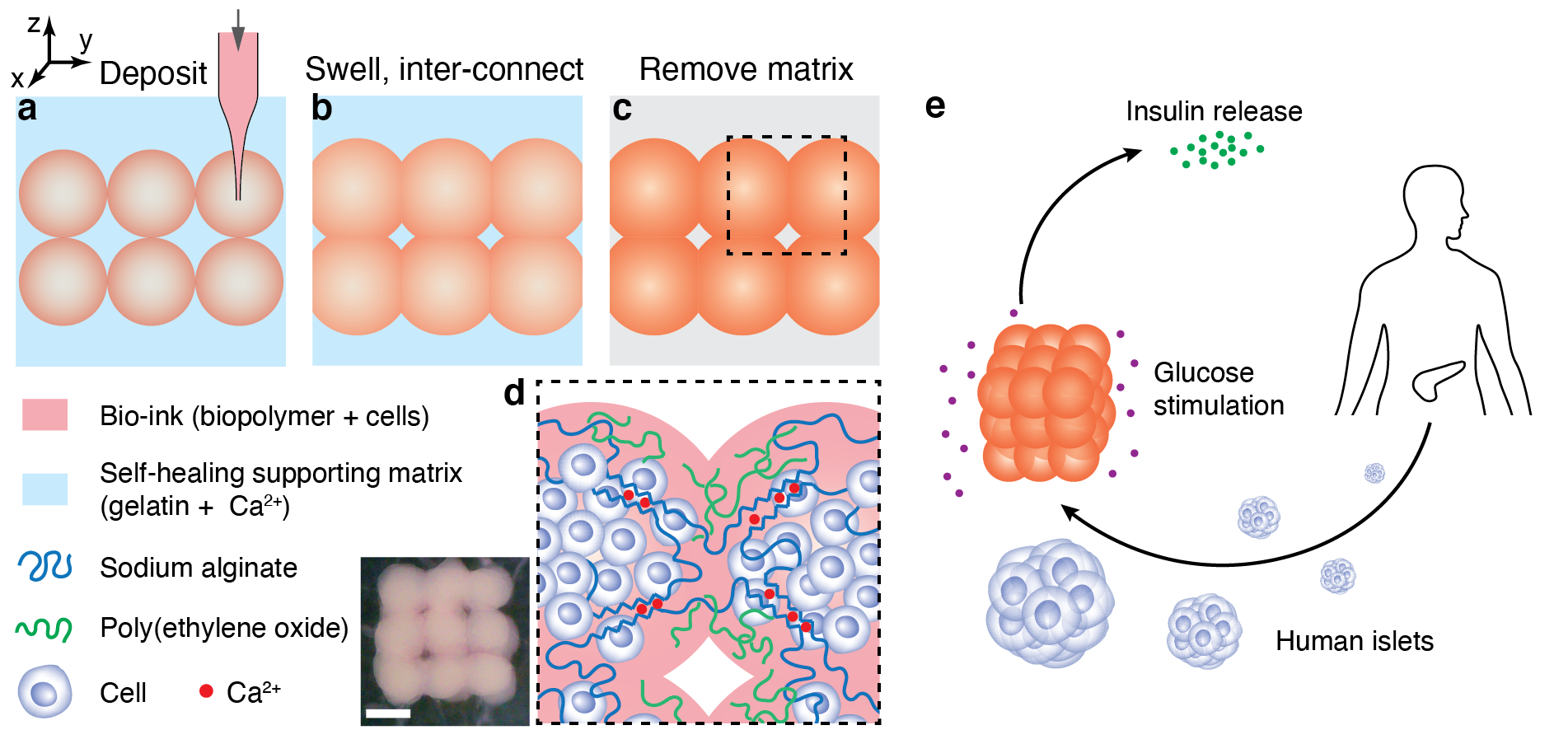Voxelated Bioprinting of Mechanically Robust Multiscale Porous Scaffolds for Islet Transplantation
University of Virginia, Charlottesvle, VA
Meeting: 2022 American Transplant Congress
Abstract number: 1521
Keywords: Bioengineering, Insulin, Islets
Topic: Basic Science » Basic Science » 05 - Translational Cellular Therapies: Islet and Stem Cell Transplantation
Session Information
Session Name: Translational Cellular Therapies: Islet and Stem Cell Transplantation
Session Type: Poster Abstract
Date: Tuesday, June 7, 2022
Session Time: 7:00pm-8:00pm
 Presentation Time: 7:00pm-8:00pm
Presentation Time: 7:00pm-8:00pm
Location: Hynes Halls C & D
*Purpose: Classical microencapsulation technologies for islet transplantation faces two major challenges associated with individual microcapsules. First, due to long-term gravity individual microcapsules often aggregate to facilitate hypoxia and subsequent fibrosis, which further reduce the transport of insulin and nutrients. Second, the FDA requires the ability to retrieve implanted devices to evaluate their efficacy and safety; however, individual microcapsules are small and widely distributed, making them difficult to be completely retrieved. The goal of this study is to develop a platform technology that solves the two challenges for islet transplantation.
*Methods: We develop a 3D bioprinting technique that allows for the digital assembly of spherical particles (DASP). Unlike most existing bioprinting techniques that assemble one-dimensional bio-ink filaments layer-by-layer to create 3D structures, DASP involves printing spherical alginate-based hydrogel droplets (as voxels) in a sacrificial gelatin supporting matrix, swelling the voxels to partially merge with each other, and removing the supporting matrix to leave behind a 3D structure consisting of interconnected yet distinguishable bio-ink particles.
*Results: We start with establishing the design criteria of supporting matrix and bio-inks for implementing DASP. Next, we construct a diagram that outlines the viscoelasticity of bio-inks required for printing spherical particles of good fidelity. Moreover, we develop a strategy for engineering alginate-based bio-inks with independently controllable viscoelasticity and mesh size. We show that DASP enables on-demand generation, deposition, and assembly of highly viscoelastic bio-ink droplets in a biofriendly environment. Using DASP, we create scaffolds composed of interconnected yet distinguishable hydrogel particles. We demonstrate the application of the scaffolds in encapsulating human islets for responsive insulin release. Finally, we demonstrate that DASP printed islets reverse diabetes in rodent models.
*Conclusions: DASP printed scaffolds synergize the advantages afforded by microcapsules and the retrievability afforded by macro-devices, and therefore, represent a novel platform for solving challenges of islet transplantation. Moreover, DASP represents a conceptual advancement in the field of 3D bioprinting, and might be used to engineer highly heterogenous yet organized 3D tissue constructs for fundamental biomedical research and therapeutic applications.
To cite this abstract in AMA style:
Zhu J, He Y, Wang Y, Oberholzer J, Cai L. Voxelated Bioprinting of Mechanically Robust Multiscale Porous Scaffolds for Islet Transplantation [abstract]. Am J Transplant. 2022; 22 (suppl 3). https://atcmeetingabstracts.com/abstract/voxelated-bioprinting-of-mechanically-robust-multiscale-porous-scaffolds-for-islet-transplantation/. Accessed December 13, 2025.« Back to 2022 American Transplant Congress

